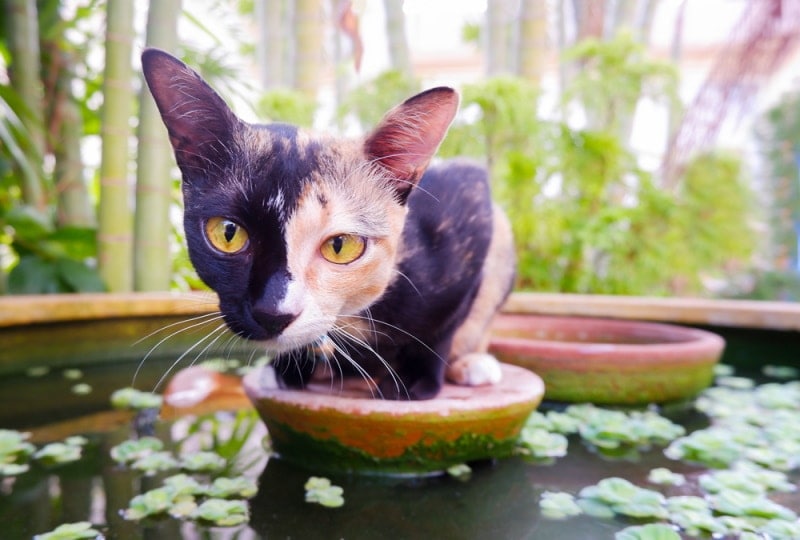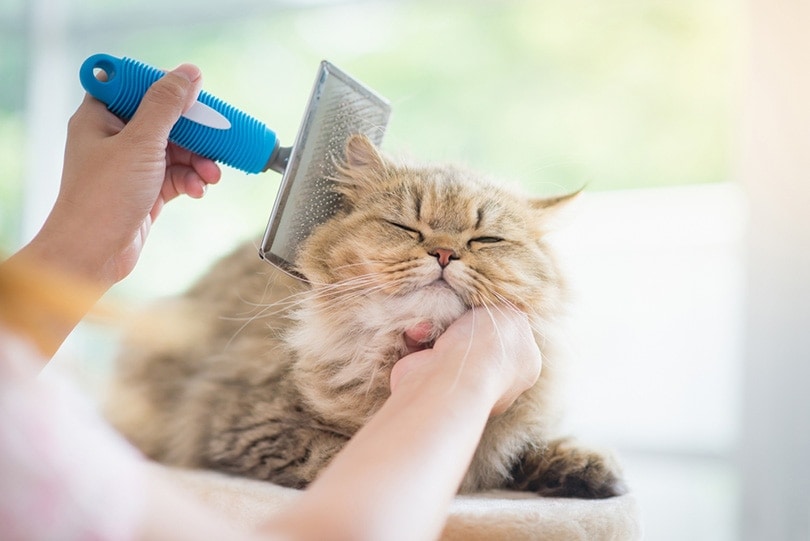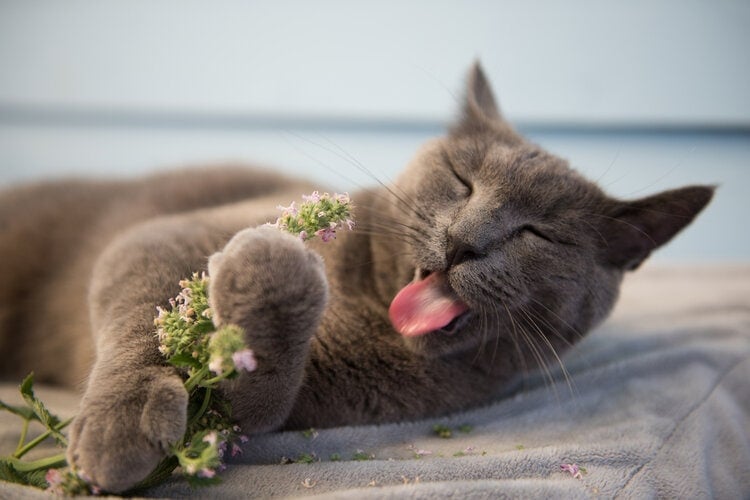Chimera Cat: Pictures, Facts, Origin & History

Updated on

If you’ve ever seen one, it’s hard to forget what a Chimera cat looks like. The reason why is as simple as it is fascinating; Chimera cats often have a face that is one color on one side and another with a completely different color, including its eye, on the other side. Although you’ll find a Chimera in Greek mythology, the Chimera cat is more a result of genealogy, as this cat breed occurs when two genetically distinct cats are fused in the womb. In layperson’s terms, a Chimera cat is created when two cat embryos attach to make one embryo, making one very interesting cat. To find out more about this distinct and unusual cat type, read on!
The Earliest Records of Chimera Cats in History
The earliest records of Chimera cats go back centuries, but there’s no distinct point when the type first occurred. Most cat experts believe that the first Chimera cat was born entirely by coincidence.
The Chimera gets its title from the mythical beast with the same name. The Chimera of Greek legend was a monster made up of parts from many animals, including a lion, goat, and serpent. Because the Chimera cat is made up of two cats, the moniker does fit, although, unlike the Greek Chimera, the Chimera cat is two cats, not two different animals. One fascinating fact about the Chimera cat is that, while other species of mammals can create Chimera offspring, it happens much more frequently to cats than any other mammal.
How the Chimera Cat Gained Popularity
Chimera cats have been around for centuries, not because they were bred but because, occasionally, two cat embryos inexplicably fuse to make one amazing cat. It happens often enough that there are references to Chimera cats throughout history, although they never were that popular.
Today, however, with the advent of the internet, the Chimera has become a bit of a celebrity cat breed, with several gaining huge followings on social media. For example, Venus, a female Chimera cat, has over 1.5 million followers on social media. In other words, although they’ve been around for a very long time, it’s only recently that Chimera cats have gained popularity, primarily due to social media.

Formal Recognition of Chimera Cats
Chimera cats aren’t a breed but rather a genetic variant or type of mutation. As such, these breathtaking and unique cats aren’t recognized as a breed by any of the major cat associations. That, however, doesn’t make them any less lovable and adorable.
Top 8 Unique Facts About Chimera Cats
1. Chimera Cats Can Have Body Parts From Two Cats
Because a Chimera cat is a result of two distinct embryos fusing, it can have some body parts made from the DNA of the 1st cat and others from the DNA of the 2nd cat.
2. Chimera Cats Have Four Sets of Parent Cells
A typical cat, and most other mammals, have two sets of cells, one from the mother and the other from the father. A Chimera cat, because it is two embryos fused into one cat, has the genetic material from four parent cats instead of two, which is why they can have faces that are a completely different color on one side and the other, along with differently-colored eyes.

3. Cat Experts Believe Some, or All, Chimera Cats Might Be Male Tortoiseshell Cats
Both cats have the XXY combination of chromosomes (although the Chimera technically has XXYY).
4. DNA Testing Is the Only Way to Say for Sure That Your Cat Is a Chimera
Without a DNA test, the only thing you can do is make an educated guess.
5. Some Cats May Look Like Chimeras but Aren’t, and Some Cats That Are Chimeras Don’t Look Like Them
Some cats might be Chimera cats and not look like it. Others might look like Chimera but don’t have the required four sets of parent genes from two cats. It all depends on their genetic makeup.
6. Except for Their Unique DNA Situation, Chimera Cats Are More or Less the Same as Regular House Cats
Chimera cats come from regular house cats but with double the DNA. It might make them look different, but Chimeras are still house cats at heart.
7. Chimera Cats Can Have Eyes of the Same Color or Different Colors
Not all Chimeras have two distinct eyes. It depends on their four sets of chromosomes and how they match or don’t match.
8. The Average Chimera Is Sweet, Affectionate, and Well-Adjusted
Cat experts believe the merger of two cats might be why Chimera cats are usually very sweet.
Do Chimera Cats Make Good Pets?
One of the best things about Chimera cats is that, besides their breathtaking coloring, they aren’t much different from your typical house cat. That means they’ll be just as loving, curious, stubborn, silly, zany, affectionate, and needy as any other cat. Chimera cats make good pets, especially when you find one with a winning personality. If raised in a happy and healthy home and given love and tender care, most Chimeras will be charming pets.
Conclusion
The Chimera cat isn’t a specific cat breed but is an almost magical combination of the DNA from two distinct cats. Chimera cats happen when two separate cat embryos merge into one at the beginning of a cat’s pregnancy. The reasons for this strange and relatively uncommon phenomenon are unknown, but the resulting cat can often have a spectacular coat and the two trademarks that set Chimeras apart from all other types of cats: a bi-colored face and bi-colored eyes.
While Chimeras aren’t rare, they have become extremely popular in the last few years thanks to social media and a few select Chimeras with spectacular color patterns. Chimeras are usually healthy, happy cats that live long lives.
Featured Image Credit: Valeriana002, Shutterstock











